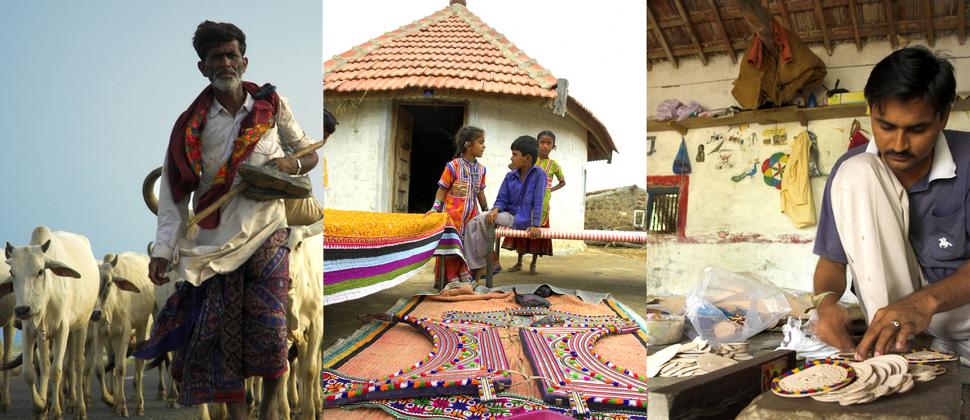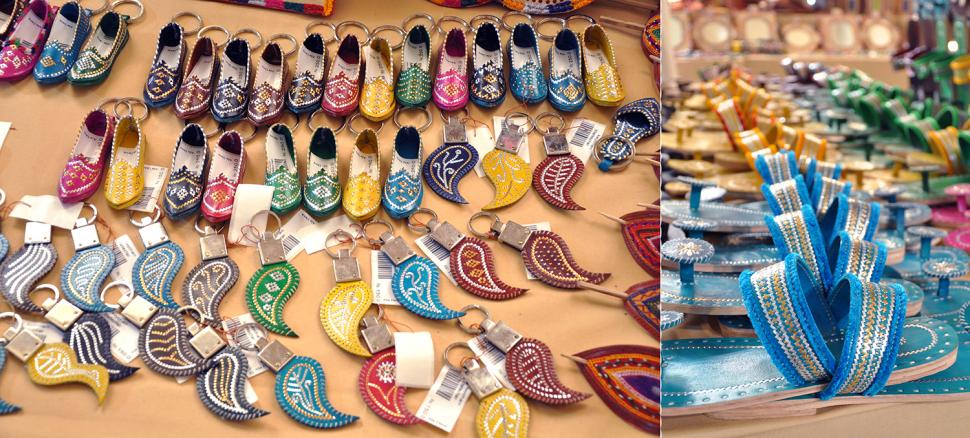Early Recycling
The Dalit Meghwals of Rajasthan migrated to Kachchh, bringing an artful leather craft with them. The trade was kept alive by a partnership with nomadic pastoralist Maldharis. When a Maldhari cattle died, the Meghwals converted the raw hides into leather. The work was tough, taking eighteen labor intensive days to treat and wash the hide. By recycling the dead cattle, the Meghwals gave new life to waste, transforming it into a product of utility. The Meghwals’ close relationship with the Maldharis resulted in a remarkable fusion of cultural customs which can be seen in the shared styles of dress and embroidery traditions of the various communities in the region.

Kachchhi leather was so well treated and durable that it could hold water. As such, it was made into long-lasting items like shoes, water bottles, horse saddles and water jugs. It is said that artisans once used real silver thread to bind pieces of leather together.
Broken Links
Emerging, cheaper factory-made products in the local market have caused the local value chain to become fragmented. Meghwals are no longer converting raw hide into leather in Kachchh due to the social stigmas attached to this practice. Now, leather artisans are dependent on external markets for both raw material and trade.
Traditional community linkages based on this craft are mostly broken because leather artisans cannot depend on their former market. Maldharis and farmers are no longer wearing traditional leather footwear, preferring more modern forms of dress. With no control on raw materials, artisans are not able to insulate themselves from the highly fluctuating market prices. The price of raw leather has risen 20 times since 2000, but the selling price of finished leather goods has only risen 3 times. Without proper training and linkages, artisans are not able to reach the right market segment nor able to understand the needs of the segment.
Many artisans are leaving leather craft, opting to work in factories. Local leather craft is losing its high quality, adopting a cheapy, kitschy aesthetic that satisfies regional tourism.
New Lessons
Khamir’s focus on back-end development issues includes new designs and product diversification, enhanced quality, and access to fair-priced raw materials. By encouraging the local community to realize the market perception of quality leather craft, more artisans have come forward to continue this practice. Working with Khamir to design new products and to collaborate with other craft artisans, leather craftsmen are creating innovative, marketable items for trade. Khamir also intervenes by educating artisans about proper business models and fair prices for their products. Discussions with the artisans indicate that intensive training and technological development will help to revive the leather trade.
